How much difference does your guitar string choice make?
Simply put, string choice is a fundamental element in finding your tone and playing style, and here’s why…
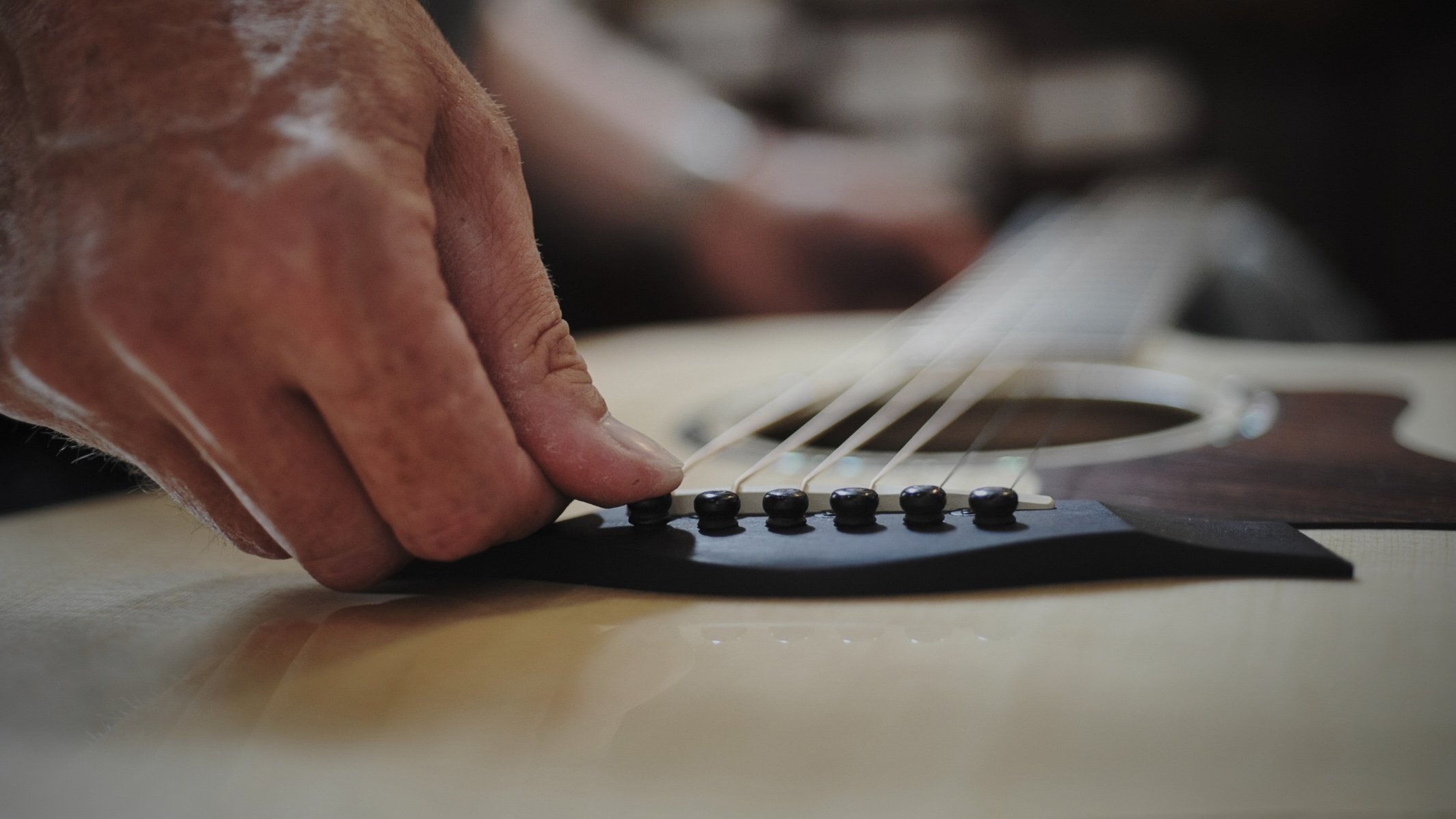
In our 24/7 obsession for all things tone and technique, it’s important not to overlook the importance of strings. Whether we’re talking the best electric guitar strings or acoustic guitar strings, these are what holds this whole guitar-playing malarky together. So if you’ve ever asked yourself, what difference do guitar strings make? We have the answers right here.
In fact, choosing the right set of strings can make all the difference. So let’s pop open a few packs, engage in some cork sniffing, and think about some of the ways strings affect our tone and playing style. Ultimately, let’s discover how a new set of strings could enhance your entire playing experience.
Do guitar strings make a difference?
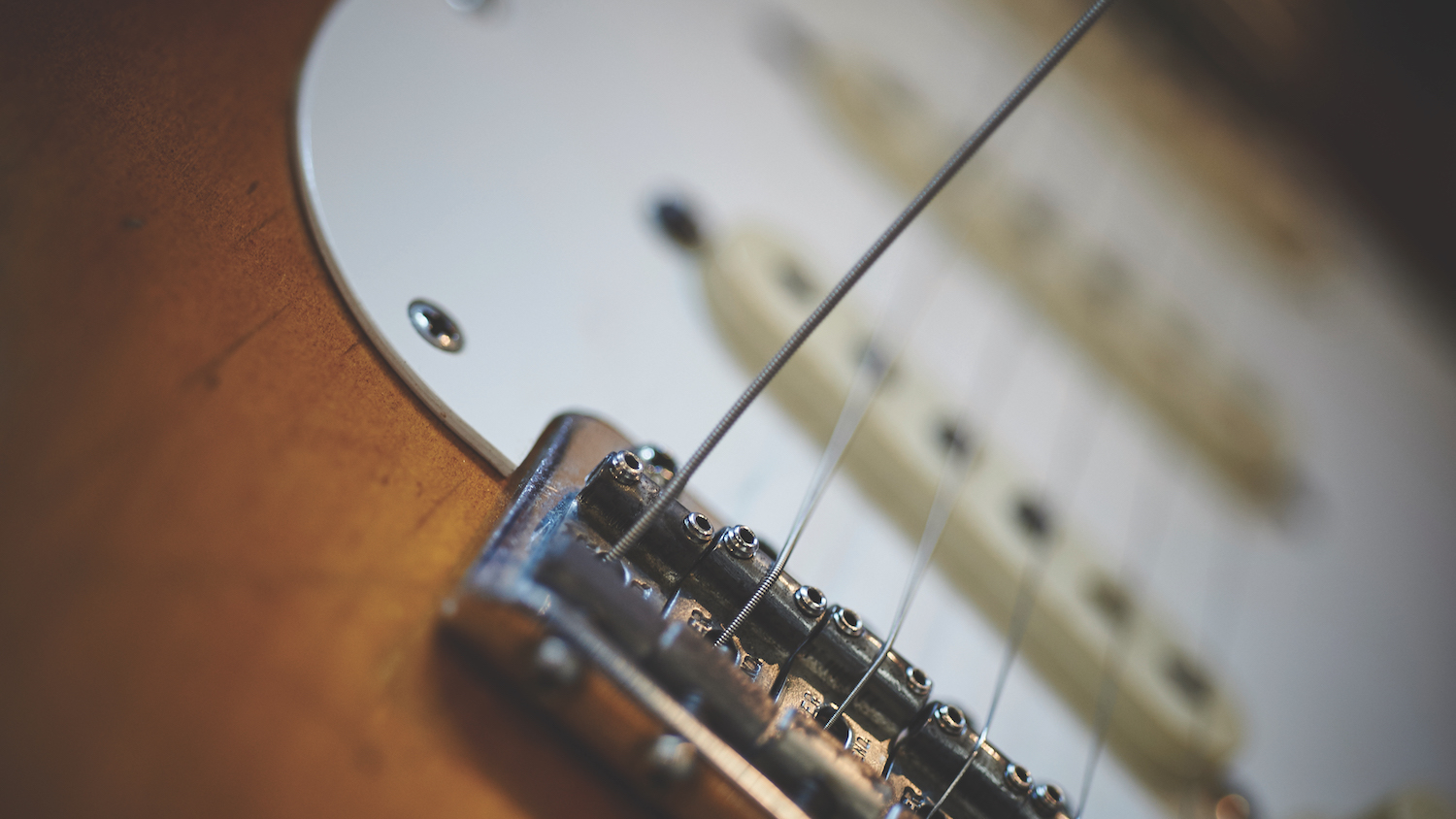
Extra light: .008, .010, .015, 021, .030, .038
Light: .009 .011 .016 .024 .032 .042
Medium: .010 .013 .017 .026 .036 .046
Heavy: .011 .015 .022 .030 .042 .054
Extra heavy: 012, .016 .020, .034, .046, .060
Regardless of whether you’re rocking one of the best electric guitars or you have both feet placed firmly in acoustic guitar camp, strings are your immediate connection with your instrument. They send your message to the guitar, transmitting it to the pickups, sending vibrations through the body and out the soundhole. That signal, those vibrations… that’s the music you play. Ultimately, how we manipulate the strings defines our playing style.
While there might be a certain commonality when it comes to how guitar strings are made – distinctions with few notable differences – all strings are not created equal, and neither are guitarists. Whether you play a beginner acoustic guitar or a metal guitar built for blazing speed, your string choice still matters.
The right set of guitar strings can complement your style, allowing you to lean into those bends a bit more, or hit your chords harder. The wrong strings – so ones that are too heavy, too old, too light, too anything – can really get in the way of your playing. As ever, it’s a question of feel and tone, and with strings that invariably leads to a question of string gauge: how thick do you like ’em?
Does guitar string gauge matter for electrics?
String gauge is possibly the biggest consideration you’ll have. Measured in 1/1000s of an inch, string gauge has profound implications for your guitar’s feel, and can similarly have a dramatic impact on your instrument’s setup and tone.
There is a general rule that can be applied across strings, on all guitars, and it’s this: thicker strings tend to have a fuller sound, with a more pronounced low end, a little more volume and a little more sustain. Thinner or lighter strings will have a little less acoustic volume and low end, and a bit more sizzle on the top-end.
Get The Pick Newsletter
All the latest guitar news, interviews, lessons, reviews, deals and more, direct to your inbox!
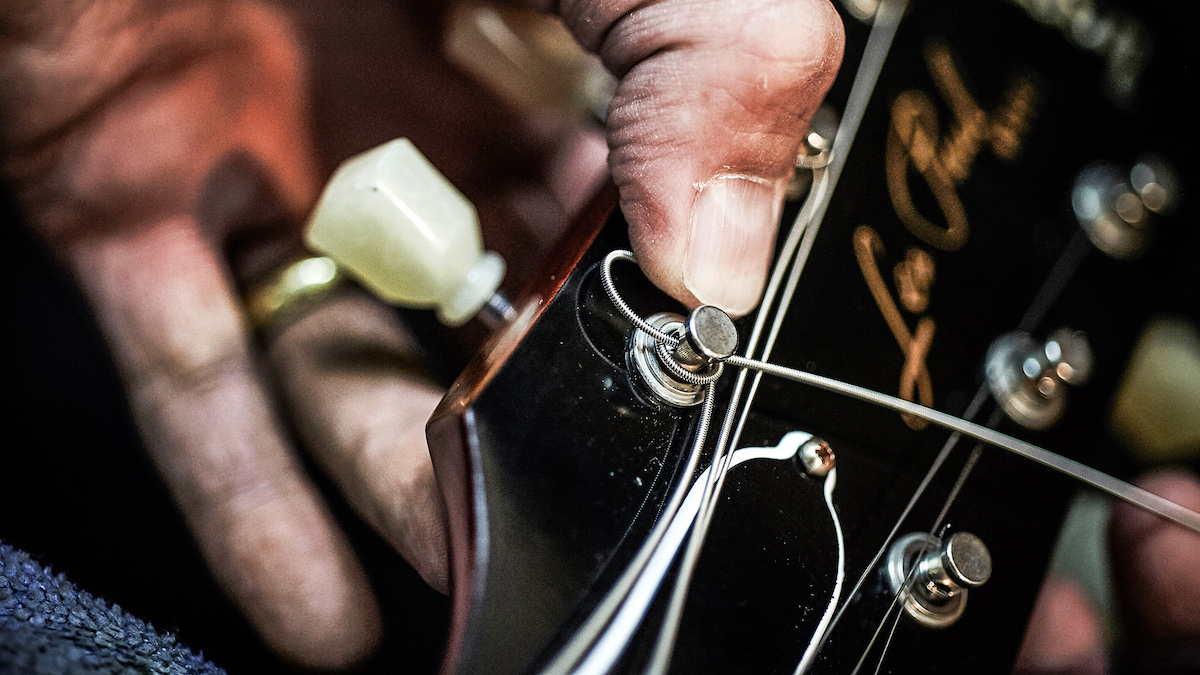
There are more variables with electrics to mitigate string gauge as a variable in your tone – there are your electric guitar pickups, effects and the guitar amp to adjust the EQ profile of your tone – but all things being equal, you should hear the difference. Think ‘beefier’ with thicker strings, and ‘top-end shimmer’ with lighter sets.
If you’re going to make a big change in string gauges, be mindful of your instrument and its setup. Moving to a higher gauge of strings might require filing your guitar’s nut, a task not to be undertaken lightly (if in doubt, drop it in at your local guitar store for a tech to fix), while stringing up with a set of 9s after using 11s might require an adjustment of the truss rod to put more relief in the neck and reduce fret buzz.
Guitar string gauges and tone for acoustics
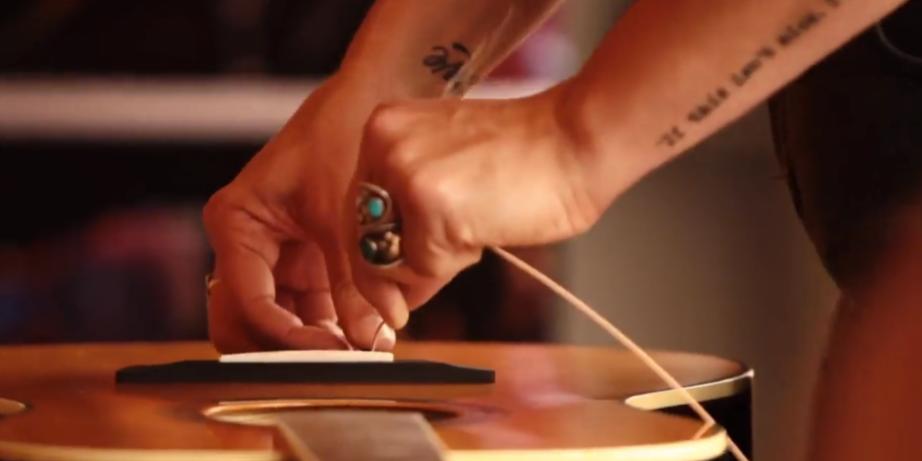
Extra light: .010 .014 .023 .030 .039 .047
Custom light: .011 .015 .023 .032 .042 .052
Light: .012 .016 .025 .032 .042 .054
Medium: .013 .017 .026 .035 .045 .056
Heavy: .014 .018 .027 .039 .049 .059
On the acoustic, your strings are doing all the heavy lifting. Sizing up and down string gauges can have a more noticeable effect on your tone. Will heavier strings always sound louder, boomier? They’d certainly be the sound option for strumming on a dreadnought or a jumbo, but it gets complicated on an instrument-to-instrument basis.
Some vintage instruments don’t respond well to heavy gauge strings, as they place too much tension on the neck and bridge. Shorter-scale acoustics, such as parlour and travel-sized guitars, often perform better – that is to say, expressing more of the instrument’s natural voice – with a lighter gauge of string.
With nylon-string classical guitars, the strings are typically generalised into three categories: light, medium and hard tension. Hard tension strings can often be too much for the hardware on vintage instruments, as they place too much tension on the bridge.
With acoustics we can apply a general rule: thicker strings, 13s and upwards typically serve the flatpickin’ strummers better, while lighter strings, so 12s and under, with their brighter top end and easier feel, are a more natural fit for fingerstyle players.
Classical players are not bending the strings as much, but string tension plays a big part in the feel of the instrument, with high-tension sets a little harder to fret than low-tension sets. That said, nylon is more forgiving to the fingertips than brass, bronze, steel or nickel, so it’s nice to be able to rule out masochism as a factor in string choice.
- Stock up on the beginner guitar gear essentials and guitar accessories
- Or get secure with the best guitar straps for all budgets
Guitar string gauges of the rich and famous
Over time, you might find a preference for a hybrid or custom gauge set in which thickness of each string diverts from the generic gauges to perhaps go lighter on the top three strings, so you can make the most of the lower string tension and really bend them when soloing, and a heavier bottom three so you can dig into the chords more.
Finding your Goldilocks gauge can be an evolutionary process of trial and error. Other times, you’ll know what you’re looking for. Take Slash, for example. He was a guitar store veteran before he became a veritable rock icon, and his heavy-hitting style was leading to too many string breakages, so he sized up his top three and kept the bottom three relatively light. Slash plays Ernie Ball and his preferred gauge runs 0.011 to 0.046, which is like a typical set of Power Slinky Ernie Balls on the top three strings and Regular Slinky on the bottom.

Mitigating the effects of an industrial accident that took the tops of the fingers on his fretting hand, Tony Iommi, sized down his strings and tuned down, and invented an entire culture in the process. Necessity is often the mother of invention. He uses custom sets from La Bella, that run .008, .008, .011, .018, .024, .032 when he is tuned to D#, and 009, .010, .012, .020, .032, .042 when in C#. That said, if you tune down, you’ll definitely want to consider thicker strings. Those tuned down to C# or lower could be looking at a set of 12s to get the right string tension and feel.
What are guitar strings made of?
Electric guitar strings are always metal. They have to be in order for the magnetic coil of the pickups to process their vibrations into a signal that can be sent to your amplifier. Typically, wound strings will have a hexagonal or round steel core around which there will be a metal wrap. That is most likely going to be made of pure nickel or described as “nickel wound” or “nickel-plated steel”, while the top three unwound strings will be plain steel.
Nickel is the vintage choice. It’s a little warmer, a little softer sounding with a more rounded low end, and gentler on your frets. Nickel wound or nickel-plated steel strings simply wrap a steel core with nickel-steel alloy, and they sound suitably brighter. Manufacturers such as Ernie Ball have used cobalt in their string construction. Optima used 24K gold in the steel alloy wrap for their signature Brian May strings.

As with all aspects of guitar gear, debate smoulders around the benefits of a hexagonal vs a more old-school round core, in which nigh-on 100% of the wrap is in contact with the core. GHS, La Bella and Stringjoy use round cores. It’s said to give the string ‘boominess’, a rather nebulous tonal quality for which GHS Boomers are named after.
Ernie Ball, D’Addario and other brands use hexagonal steel cores. They might not be as flexible as round core strings, but they’re brighter and hold their tune better. If you were to look at the transition from pure nickel to nickel wound, from round core to hexagonal core, you could say string evolution is heading towards more brightness.
Acoustic strings have a similar steel core construction, but to generate that extra treble and oomph they need a brighter-sounding wrap, such as 80/20 bronze, aka brass, or phosphor bronze. This was pioneered in 1974 by D’Addario to give a warm, well-balanced tone – and crucially to last longer. Therein lies an issue that has consumed the R&D budget of every string manufacturer: how to make guitar strings last longer.
Should you use coated or uncoated guitar strings?
Coated strings have grown in popularity as manufacturers like Elixir found ways of literally coating the string with a protective material to prolong its lifespan. At first there was a debate as to whether the process worked – some people complained of flaking coating, or that – and there could be the power of suggestion at play here – the strings did not have the full frequency range as uncoated strings.
But the technology has evolved. Now it’s a question of which coating you would like, and whether the extra outlay is worth it. A coated set might cost three times as much as an uncoated set, but if it lasts you longer – and many, such as Ernie Ball’s Paradigm strings, come with a freshness guarantee – it represents good value. Elixir offers three different coated options, each with its own tone profile.
There’s the original Polyweb, which has a warmer tone and slick feel. There’s the Nanoweb, on which the coating is even thinner, leading to a brighter string, and then there’s the Optiweb, available only for electrics but offering a naturalistic feel.
These premium sets from Elixir, plus the likes of Ernie Ball’s Paradigm and D’Addario’s EXP series, are well worth investigating.
How often should guitar strings be changed?
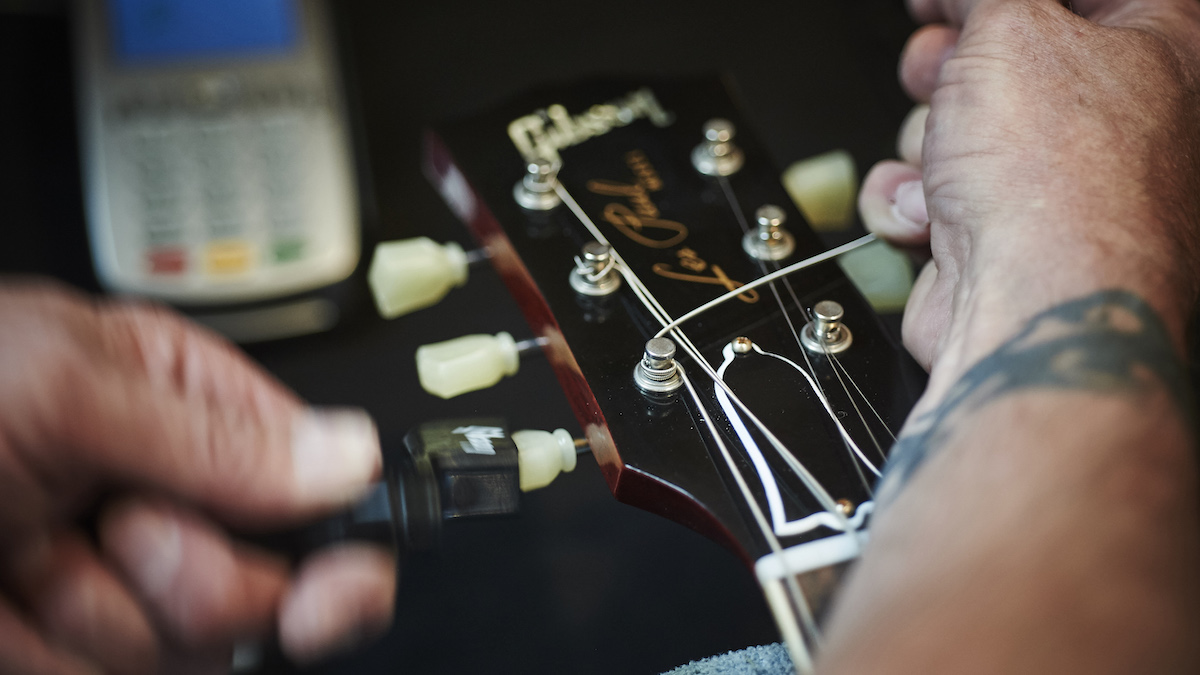
Guitar strings are a repository for dead skin, dust and goodness knows what else, and all this gunk all serves to dampen the strings, taking some of that top-end off and making them feel dirty. Factor in the abuse from tuning and retuning, string bends and whatnot, and older strings tend not to hold their tune.
When you hear them going dead, or when they start to feel claggy, change them. Some players don’t like super-fresh strings, which is when they’re at their brightest. There can be a bit more string noise, a little squeak, and that can be difficult to record. But a little stretching and an hour or so of playing will dial back some of that tonal rambunctiousness.
On the other hand, some players insist on a fresh set before each show. The harmonics come easier, the strings feel quicker, and that extra articulation can make all the difference, especially to acoustic players. That’s why Tommy Emmanuel changes his guitar strings before every show.
How to clean guitar strings
You’ll have to change your guitar strings a lot less if you clean them after your play. The best way is to remember to keep a clean cloth handy to wipe them down and get all those deposits from your fingers off each string. Better still, invest in a string cleaner such as GHS’s Fast Fret and you’ll find your strings last just that little bit longer.
- Drop it with the best bass strings for all budgets
- Want the best flatwound bass strings instead? Then here you go…
Jonathan Horsley has been writing about guitars since 2005, playing them since 1990, and regularly contributes to publications including Guitar World, MusicRadar and Total Guitar. He uses Jazz III nylon picks, 10s during the week, 9s at the weekend, and shamefully still struggles with rhythm figure one of Van Halen’s Panama.
“A distinctive brightness that no other strings have been able to capture”: How Rotosound revolutionized the bass world with its Swing Bass 66 strings – and shaped the sound of rock music in the process
“It’s almost impossible for our machinery to make a bad string”: Jim D’Addario on the history, innovations and future of the world’s biggest string manufacturer – and its biggest-selling string sets


![John Mayer and Bob Weir [left] of Dead & Company photographed against a grey background. Mayer wears a blue overshirt and has his signature Silver Sky on his shoulder. Weir wears grey and a bolo tie.](https://cdn.mos.cms.futurecdn.net/C6niSAybzVCHoYcpJ8ZZgE.jpg)

![A black-and-white action shot of Sergeant Thunderhoof perform live: [from left] Mark Sayer, Dan Flitcroft, Jim Camp and Josh Gallop](https://cdn.mos.cms.futurecdn.net/am3UhJbsxAE239XRRZ8zC8.jpg)






